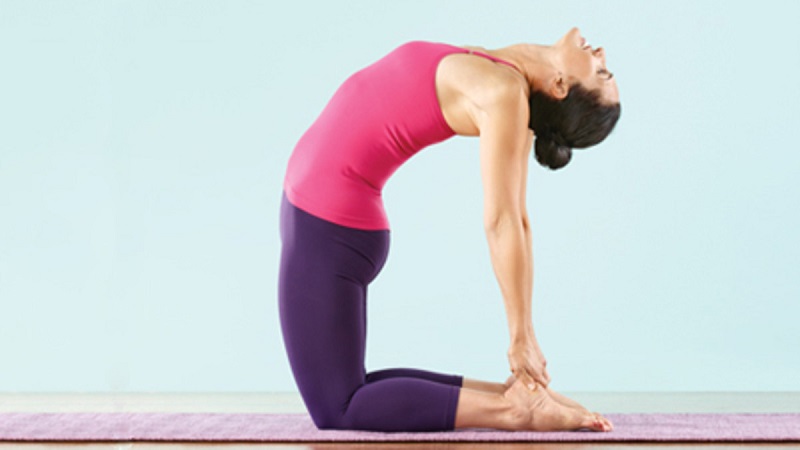
Egg diet: how to lose weight using this food
September 19, 2020
Casual outfits: how to combine them according to the season
September 20, 2020Yoga sequence to reduce stress
Who hasn’t or has never had stress-related problems? There will be very few hands raised among your readers beyond the monitor! Today’s life often puts us under pressure, both professionally and privately: working long or irregular hours, lack sleep, worries, hyperactivity, lack or excess of physical activity, difficulty in relaxing and carve out a quiet moment healthy unbalanced, and lacking in nutrients. These and other factors combine to keep high levels of stress in everyday life.
In his Great Book of Yoga Therapy, yoga teacher and Ayurveda expert Remo Rittiner writes that, from an Ayurvedic point of view, these stressors of everyday life “bring the Vata dosha into a situation of imbalance and therefore compromise our physical and mental motor processes. There is a higher than normal secretion of stress hormones (cortisol, adrenaline, insulin) which overheat the body, giving rise to a condition that is perceived as a permanent state of alert in which one is ready to fight or flee. In the long run, this excessive release of stress hormones can give rise to what is called burnout syndrome, or even depression. ”
Doing yoga regularly brings tranquility, helps you to listen to yourself and get in touch with the inner Self. Breathing techniques and meditation, in particular, have powerful, even long-term effects on stress-related disorders.
We offer you a dynamic Hatha Yoga sequence for stress reduction, which works on loosening back contractures and prolonging breathing, with a deep calming action on the nervous system. You will see that by practicing the mind will be more and more concentrated and collected, thoughts will be reduced and you will more easily find a state of tranquility and peace.
Table of Contents
ToggleYoga program for stress reduction
Position 1: Savasana
- Lie on your back and rest your arms on the sides of your body
- If you feel the need, put a thin pillow or a folded blanket under the occipital and cervical area; if you feel contractures or pain in the lower back, bend your knees, put your feet on the ground and bring them closer to your buttock
- During the position, inhale completely through the nose and exhale while consciously prolonging the exhalation without getting tired
- Continue for 2-3 minutes
Position 2: Urdhva Prasarita Padasana
- In the supine position, place your feet on the ground at the same distance as the hips, arms resting on the sides of the body
- Inhaling, raise your arms and bring your straight right leg up
- Exhaling, bend the right leg and bring the knee to the chest, grabbing it with both hands
- Repeat 8 times to the right and 8 to the left
Position 3: Chakravakasana
- Get on all fours: hips and knees form a vertical line, hands are placed just ahead of the shoulders
- Inhaling, lengthen the spine and lift the breastbone to open the chest wide
- Exhaling, begin to round the lower back, bringing the buttocks towards the heels; exhale slowly consciously and hold retention * with empty lungs for a few seconds – hold this position for 3 breathing cycles
- Repeat 8 times
* In case of problems such as asthma, hypertension, and heart problems it is good to avoid holding your breath
Position 4: Eka Pada Ustrasana
- Get on your knees and step forward put your right foot on the ground; malleolus and knee form a vertical line
- Inhaling, raise your outstretched arms and lengthen your spine
- Exhaling, bend forward and stretch your right leg as much as possible; place your hands on the floor on either side of the leg to stabilize the position
- Repeat 6 times on each side, left and right, maintaining the second position for 3 breaths
Position 5: variation of Janu Sirsasana
- Sit up straight and bring your right knee outwards; To align your spine well and lean forward effectively, you can also sit on a pillow
- Inhaling, raise your outstretched arms up
- Exhaling, lean forward and chant the Om mantra in a soft voice, flexing the right knee
- Repeat 8 times to the right and 8 times to the left, maintaining the posture for 4 breathing cycles
Position 6: Savasana and pranayama
- Lie on your back and rest your arms on the sides of your body
- If you feel the need, place a thin pillow or a folded blanket under the occipital and cervical area to keep it relaxed
- Inhale freely and effortlessly, always through the nose
- Exhaling, prolongs exhalation, gradually increasing its duration *:
- Exhale for 6 seconds (6 breaths)
- Exhale for 8 seconds (6 breaths)
- Exhale for 10 seconds (6 breaths)
- Exhale for 12 seconds (6 breaths)
- Exhale again for 6 seconds (6 breaths)
- Continue for 2-3 minutes
* If the prolongation of the exhalation is excessive for you, respect your limits and never force your breathing









